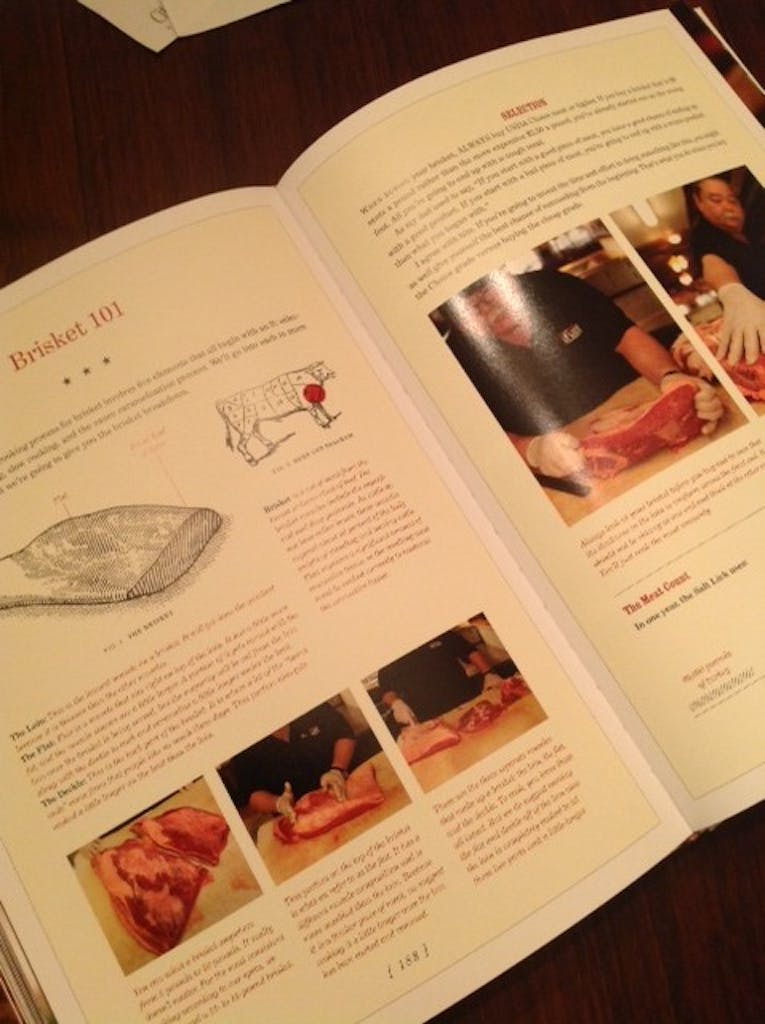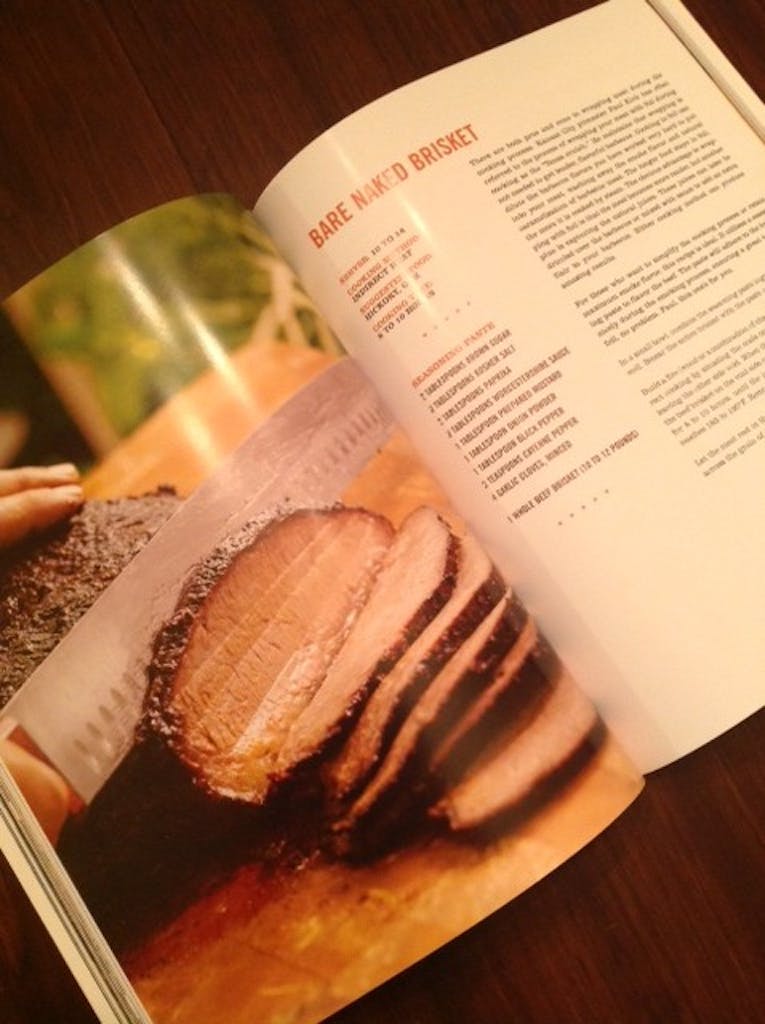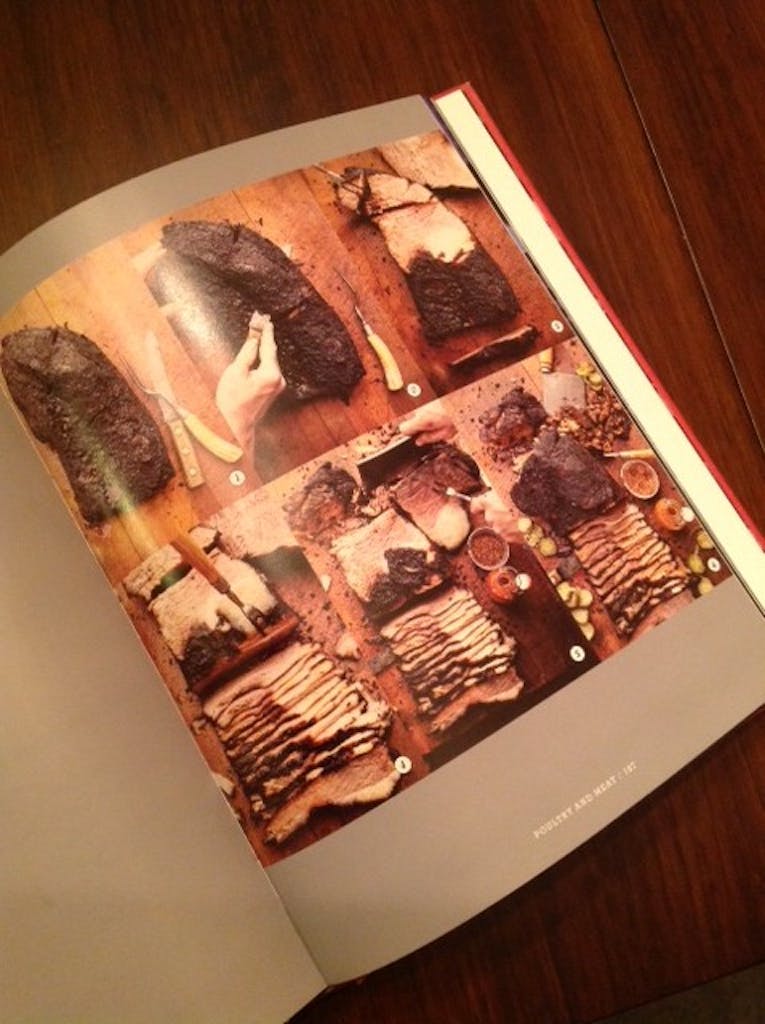Jeff Phillips Smoking Recipes for Corned Beef Brisket
Brisket is our favorite cut for barbecue here in Texas, and it's also pretty popular elsewhere, as evidenced by the sheer number of brisket recipes one can find on a shelf of barbecue cookbooks or can pull up using a Google search (searching "how to smoke a brisket" calls up more than 1.8 million hits). But how much variation is there between these innumerable recipes? I combed through 22 cookbooks* (I didn't have time to read 1.8 million pages on the Internet, but I'm working on it) collecting data from each of the recipes. I wanted to find where the clusters of technique were, but I also was wanted to discover what outliers there were and how much of a difference these deviations might make. I broke it down by category below:
Equipment: Five of the 27 recipes suggested the use of a grill rather than a smoker. There isn't an indication if the author prefers a grill to a dedicated smoker or if the writer suggests it because he thinks the audience is more likely to own a grill than a smoker. Of course, I'd prefer to use an offset smoker, and the majority of cooks in this collection agree (though Bobby Flay, Steven Raichlen, and Adam Perry Lang's recipes are amenable, allowing the use of a simple grill if an offset smoker isn't available).
BOTTOM LINE: 81 percent suggest using a smoker.
Brisket: While most all of the recipes suggest using a whole brisket, some get more specific. A few old school Texas pitmasters insist on using Select grade briskets, while Ray Lampe notes that Choice is his preferred grade. Aaron Franklin uses only all natural, hormone-free, antibiotic-free, Angus briskets. Mike Mills is also in the Angus camp suggesting the use of Certified Angus Beef briskets. The two outliers here are Adam Perry Lang who likes a bone-in brisket for his recipe, while the Pitt Cue boys let their brisket hang in a dry-aging room for up to five weeks. With so few specifying the type of brisket, the most common suggestion is actually Select grade.
BOTTOM LINE: Four out of seven that specify a grade suggest Select.

Trimming: Thankfully, none of these recipes call for removing all of the fat from the brisket. The Wicked Good team gets the closest by having you trim the surface fat from the point while retaining the entire fat cap over the brisket flat. Fourteen say to leave all the fat on and keep the brisket untrimmed, while eleven say to trim the excess fat down so that there is a quarter-inch to half-inch fat cap remaining. It's a close one, but leaving it untrimmed wins by a hair.
BOTTOM LINE: 52 percent suggest leaving the brisket untrimmed.
Rub: This is where things get wildly divergent. There is an average of six rub ingredients per recipe, but a full thirty percent of the recipes call for only three ingredients. Jim Goode's recipe in Legends of Texas Barbecue and Mike Mills's recipe both call for fourteen separate rub ingredients, putting them at the far upper end of the scale. Salt and pepper show up in every one. Bobby Flay gets fancy and introduces allspice and celery seed. Wicked Good is the lone user of hickory powder. Coffee shows up twice, in Ray Lampe's and Tim Byres's recipes. The most popular rub ingredients in descending order are salt (27), black pepper (27), garlic powder/salt (17), paprika (13), brown/white sugar (12), and cayenne (9). Those would be the components of your average six ingredient rub. That leaves out some outliers like crushed bay leaves, savory, and basil. And then there are the slurries. Chris Lilly suggested spreading crushed bullion cubes and Worcestershire sauce all over the surface before applying the rub, and three others suggested a yellow mustard bath. They were in the minority though, as most just relied on the surface of the raw brisket to hold onto the rub.
BOTTOM LINE: The consensus rub is six ingredients: salt, black pepper, garlic powder, paprika, sugar, and cayenne.

Wood: A few of the competition cooks like Chris Lilly and Mike Mills insist on a mix of three hardwoods, but most everyone chooses just one. Pecan, apple, and mesquite get a little love, but hickory and oak are in a dead heat as being the sole choice of eight different pitmasters.
BOTTOM LINE: Use oak or hickory for smoking.
Cooking Temperature: In Legends of Texas Barbecue, Edgar Black suggests that we crank the fire to 300 degrees for his brisket and Vencil Mares in The Prophets of Smoked Meat goes even further to 325. On the other end of the spectrum, the Salt Lick goes all the way down to 185 for a good portion of their cooking time. These are the definite outliers considering every other recipe falls within a fifty degree range from 225-275 degrees.
BOTTOM LINE: Smoke between 225-275 degrees.
Wrapping: Using a foil wrapper for the meat during cooking is an easy way to retain moisture and to keep the heat of the brisket increasing steadily. Foil is considered taboo by some, while others say it's the key to moist meat. In this grouping, eleven of the recipes called for wrapping the meat during the cooking process, and sixteen recipes instruct novice pitmasters to leave your brisket naked.
BOTTOM LINE: Forget the foil wrapper.

Doneness Determination: I really expected to some interesting pitmaster tips on how to determine doneness. Wicked Good and both Vencil Mares and Aaron Franklin in The Prophets of Smoked Meat said to use a fork to test doneness, but 21 of the recipes say to use a thermometer. Twenty of those place the target anywhere between 185 and 200 degrees, while eight of those put the magic number right at 190. You might get tough brisket if you use the Salt Lick range of 165-175 degrees.
BOTTOM LINE: Cook it to 190 degrees.
If you analyze all of these recipes, there are "method clusters" in each of the steps. These represent the most common way to trim, season, and cook a brisket. You can collect all of these clusters and create a single recipe. Without the method outliers it certainly won't be flashy. It might actually be downright average, but it will be safe. After looking at 27 recipes in these twenty cookbooks, here is the safest way to smoke a brisket.
- Use a smoker, and fuel it with oak or hickory.
- Rub your untrimmed Select grade brisket with salt, black pepper, garlic powder, paprika, sugar, and cayenne.
- Smoke it at 225-275 degrees until it reaches and internal temp of 190. Do not wrap it in foil.
I do not guarantee a good result from this recipe. It just goes to show how far an average can get you.
*The cookbook list:
America's Best BBQ Homestyle by Ardie Davis and Paul Kirk
The Barbecue Bible by Steven Raichlen
Big Bob Gibson's BBQ Book by Chris Lilly
Big Book of BBQ by the Editors of Southern Living
Bobby Flay's Barbecue Addiction by Bobby Flay
The Brisket Book by Stephanie Pierson
Charred & Scruffed by Adam Perry Lang
Legends of Texas Barbecue by Robb Walsh
Peace, Love and Barbecue by Mike Mills and Amy Mills
Pitt Cue Co. Cookbook by Adams, Anderson, Berger & Turner
The Prophets of Smoked Meat by Daniel Vaughn
The Salt Lick Cookbook by Scott Roberts and Jessica Dupuy
Serious Barbecue by Adam Perry Lang
Slow Fire by Ray Lampe
Smoke by Tim Byres
Smoking Meat by Jeff Phillips
The Southern Cowboy Cookbook by John Rivers
Taste of the Town by Todd Blackledge
Texas Barbecue 101 by John Lopez
Wicked Good Barbecue by Andy Husbands and Chris Hart
Source: https://www.texasmonthly.com/bbq/breaking-down-brisket/